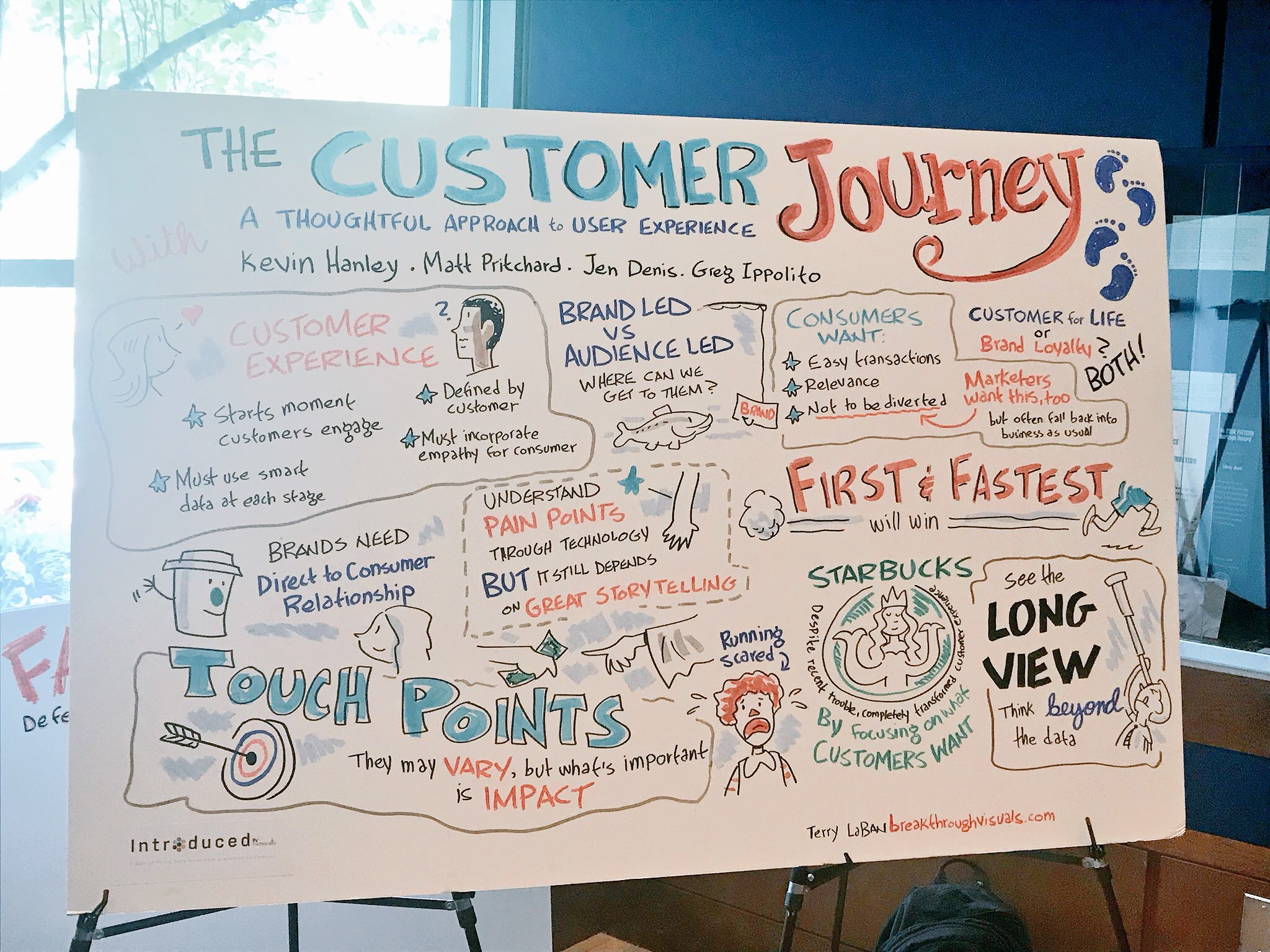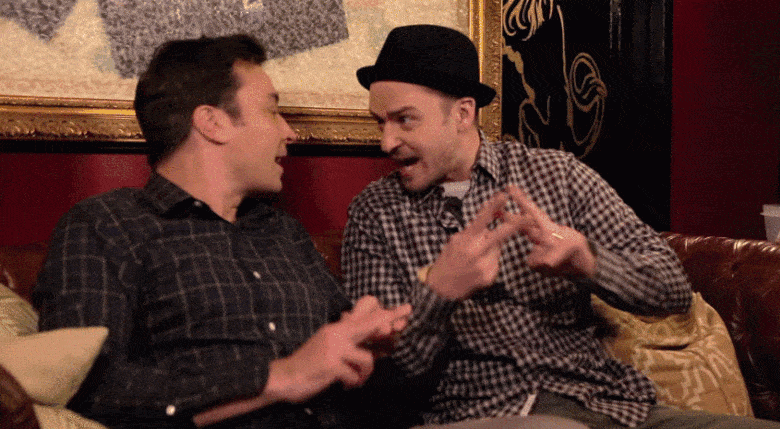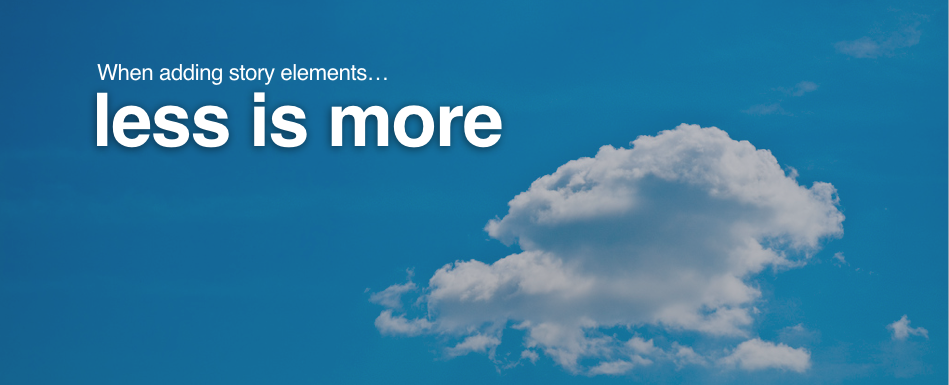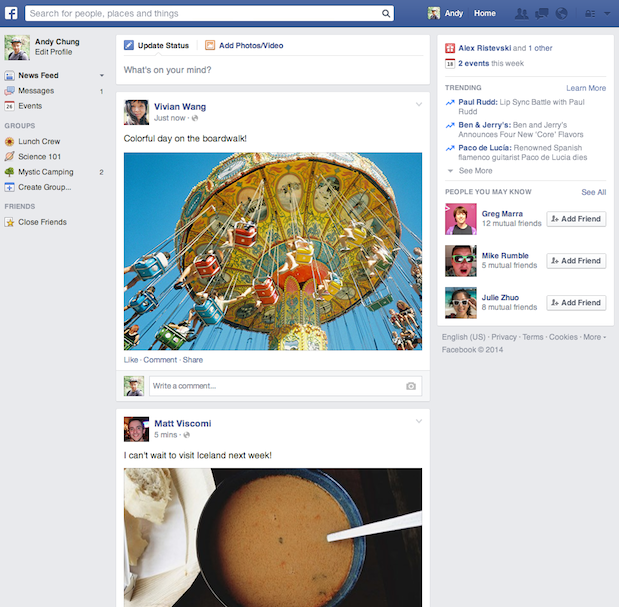Philly Tech Week's Entrepreneur Boot Camp brought together Philadelphia area experts to help teach early-stage entrepreneurs the basics of starting a business. I was fortunate enough to be chosen as one of those experts in 2015. Things have changed quite a bit in the digital age, so I walked through five best practices to help entrepreneurs connect and convert customers using social media. Check out the recap below and scroll through the slides on SlideShare.
One thing that can quickly threaten to take a business from a startup to a slowdown is conversion – the customer acquisition process. In the digital age, the models have changed a bit. You might have seen acquisition funnels that pull your customer from awareness to action, but in reality, your customers are at every stage of that process at every minute. And in the digital world, they’re expecting you to be right there with them. Fortunately, for brands that deliver on that expectation, the rewards can be great.
On Facebook, the world’s largest social network, followers are 80% more likely to be brand users than non-followers. Similarly, Twitter followers are 64% more likely to buy products from brands they follow, so the chances that your social media content reaches current or potential users is much higher than you might expect. That’s a great sign.
But what do you need to know? Ultimately, you’re not just looking to connect; you want to convert.
Here are the five things entrepreneurs need to know about social media in order to attract attention, and ultimately, convert buyers into advocates.
This Isn’t Highlander. There isn't just one.
First, this isn’t Highlander. Social networks aren’t battling to the death so that you can pick just one channel. These channels are often complementary, providing unique content to specific audiences that may or may not overlap.
Last year, more than half of all internet users in the United States were active on two or more of the five major social media channels – Facebook, Twitter, LinkedIn, Instagram, and Pinterest, according to Pew Research. This number is up from 42% the year before, so it’s important to consider the audience and opportunity to connect with that audience on each platform before coming up with a strategy.
Why? Because the right platform and content mix matters. At LevLane, we’re working with the Mayor’s Office of Transportation and Utilities on a pedestrian and driver safety campaign, centered around the rallying cry “It’s Road Safety Not Rocket Science.” The campaign is designed to engage pedestrians and drivers who are accidentally (or purposely) disobeying the rules of the road, making it more dangerous for themselves and others. In fact, there were more than 1,800 pedestrian-driver crashes in the City of Philadelphia in 2013, which averages out to about one every 5 hours – almost 5 per day. So to do that, we chose our platforms carefully – the major platforms on which Philadelphians are spending their time, whether they’re on the go or in a chair. We shared compelling content on Facebook, Twitter, and Instagram throughout the campaign, and, while our cartoon imagery was fun and eye-catching, we focused our efforts on video.
In August 2014, Facebook actually matched YouTube in terms of videos viewed on desktop, and according to Social Bakers, videos uploaded to Facebook (rather than linked in a Facebook post through YouTube) saw an average of 40% more engagement. That’s a big deal. When we learned that, we sought to share those videos directly on Facebook, which helped us reach nearly 5,000 views since the video was posted earlier this month (compared to about 3,000 views on YouTube). Needless to say, these videos made a big impact for us. By creating content that was fun and entertaining, and by understanding the social landscape, we were able to take a subject as “boring” as pedestrian safety to get attention from local media (including CBS Philly and Philadelphia Magazine) and national and international media (including national ABC News and the UK’s Daily Mail).
Follow the conversation, then join it
The second thing that entrepreneurs need to understand is the importance of following a conversation before joining it. Online conversations about brands, communities, causes, and what everyone ate for lunch is everywhere. And oftentimes, those conversations are happening in places you don’t expect.
In years past, our Massage Envy Spa clients shared with us the most common sites for reviews about their brand – locally and nationally. They’d been focusing primarily on Yelp and Google. In 2014, we discovered that our Massage Envy Spa clients were missing nearly 40% of online reviews because they weren’t monitoring the platforms their customers were actually using to share their feedback. Without tracking conversations, reviews, and tips shared on Yahoo! Local and Foursquare, they were missing the full picture of their brand online and on opportunities to engage.
One of my favorite examples of following a conversation and then joining it is actually from the National Park Service. For those of you who watched NBC’s Parks and Recreation, you’ll know that in the last episodes of the show, Amy Poehler’s character is considering a job with the National Park Service. To capitalize on this great opportunity to turn enthusiastic followers of the show into potential advocates for the country’s real parks, the National Park Service used Promoted Tweets targeted to viewers of the show during the series finale to encourage viewers to get involved with the real National Parks Conservation Association. And what’s great about using Twitter Cards is that all a person had to do was click, so their interest in the cause didn’t take them to a separate experience outside of their Twitter feed; instead, Twitter allowed users to click to provide the email address they already used on Twitter to sign up for emails and get involved.
Think platform first, then strategy and execution
Before you start thinking about what you’re going to do and how exactly you’ll do it, it’s critical that entrepreneurs consider the platform first. In the social world, each channel has different requirements, unique creative parameters, and audiences who engage in unique ways.
Here are a few examples. First up: Ben & Jerry's. This example is an oldie, but a goodie. To promote a cause close to their corporate hearts, Ben and Jerry’s created a social microsite that put Twitter users’ unused characters to good use – helping them to promote World Fair Trade Day. By entering your tweets through their platform, they customized tweets using leftover Twitter characters to support fair trade. They could have decided to do something that was more generic that might work across all of their social platforms, but instead they chose to engage in a unique way on just one platform. Brilliant.
The second example is a local one – Jinxed, three vintage stores in the City of Philadelphia. Chances are if you like vintage finds and home decor in Philadelphia, you’re following Jinxed. If you’re not, I suggest you do. They’ve found a great way to translate their social presence into sales. Jinxed promotes local vintage finds (which are available in their stores) and boosts sales with exclusive call-to-buy calls to action at three locations on Instagram, which still shows users’ posts in reverse chronological order. It becomes competitive, with users regularly checking back to find new deals that they can take advantage of without every having to leave their houses or offices.
Purchases are overrated; advocacy is where it’s at
But even with these great examples of conversions, it’s important to remember that purchases are overrated. Ultimately, you want more than just a one-time buy; you want advocacy that will translate into loyal customers who attract and convert more loyal customers.
At LevLane, we invited Rothman Institute patients to share their own stories with other people just like them. Many of those patients were scared, but we sought to convert their uncertainty into optimism. By sharing real stories on Facebook, Rothman Institute patients inspired more than 100 other patients to share their own stories in the comments of the posts. Of course, it was great to see that people were so enthusiastic about their surgeons and physicians, but what was even more inspiring was the response from people who weren’t patients yet. People who shared the posts with their families and friends, called out their loved ones who were suffering and said things like “See? There is hope.”
Analytics are your friend. Your "gut feeling" probably isn't.
Every client I have tells me something that they believe they know. But oftentimes, their “gut feelings” (sometimes fueled by outdated research) are just plain wrong.
Our Massage Envy Spa clients told us that their customer base was consistently a 50-50 split between men and women, who were mostly white and between ages 35 and 54. On a hunch, we challenged that. It just didn’t match up with what we were seeing online. So we pulled the numbers and in many spas the customers and followers just didn’t match up. In fact, in many markets the customers were a 75-25 split between women and men, who were mostly African-American, and ages 25-54 (but mostly 25-34). It was astounding and it provided us an opportunity to question whether or not to experiment with different creative, messaging, and strategy to more effectively engage the audience.
Knowing is half the battle, so let’s recap. First, there isn’t just one platform or content type that works, so it’s important to do your homework in advance. And speaking of doing your homework, it’s critical to follow the conversation before you join it. Then strategize for each social platform. Aim for advocacy, not just one-time buyers. And finally, use analytics to continually optimize and improve.













